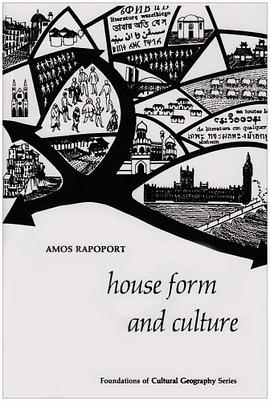House Form and Culture
内容简介
This book ties together many ideas from the fields of anthropology and architecture. Rapoport methodically builds an argument for his hypothesis that "The different forms taken by dwellings are a complex phenomenon for which no single explanation will suffice." He supports his arguments with hundreds of examples drawn from the literature, as in the style of a review article. I was struck by parallelism between Rapoport's evidence that houses can vary tremendously, even given similar environmental or cultural factors, and the old structural linguistics adage that languages can vary in innumerable ways. Some of Rapoport's terminology is now outdated (e.g. "primitive societies,"), but these terms were standard at the time when the book was written so he shouldn't be singled out for using them. The ideas presented in the book are well worth studying and the book includes numerous reference citations for further investigation.
--By Erika Mitchell, Published on Amazon.com
......(更多)
作者简介
Amos Rapoport (1929, Warsaw, Poland) is the author of the book House, Form & Culture - which talks about how culture, human behavior, and the environment affect house form.
Until his retirement in 2001, he taught at the University of Wisconsin–Milwaukee where he was a Distinguished Professor in the School of Architecture and Urban Planning. He is one of the founders of the field of Environment-Behavior Studies (EBS). His work has focused mainly on the role of cultural variables, cross-cultural studies, and theory development and synthesis. In addition to House, Form, and Culture he is the author of three other books and nearly 200 articles, papers, and chapters, as well as editor or co-editor of four books.
He has also taught at the Universities of Melbourne and Sydney, the University of California, Berkeley, and University College London. He has also held visiting appointments in Israel, Turkey, Great Britain, Argentina, Brazil, Canada, Mexico, Puerto Rico, India, and Switzerland, among other places.
......(更多)
目录
......(更多)
读书文摘
理解行为模式的意义,包括愿望、动机和情感,是理解建成形式的基础。因为建成形式是这些模式的物态体现;其次,形式一旦生成就要反过来影响行为和生活方式,……问题的实质,是行为模式所表达的文化变化如何对应于物质形式所表达的环境变化。
......(更多)






